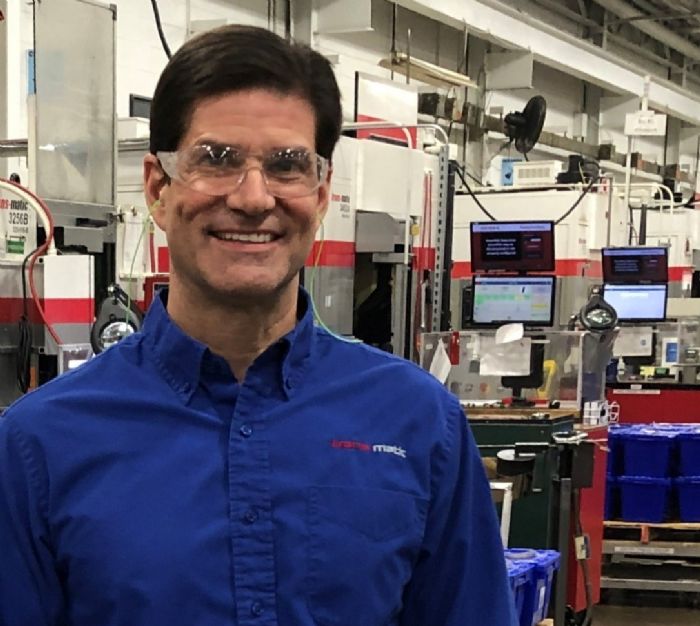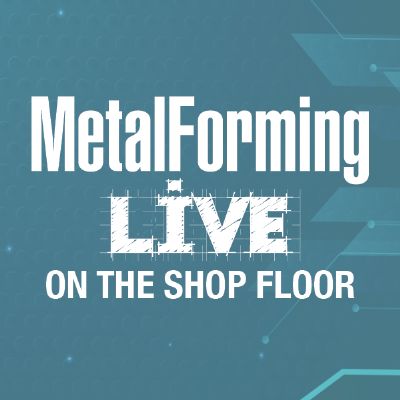Q: What’s the best management-related book, webinar or event you’ve recently enjoyed, and what were one or two of the key takeaways?
Sotok: Our entire leadership team has read “Crucial Conversations,” by Kerry Patterson, Joseph Grenny, Ron McMillan and Al Switzler, and has gone through facilitated training with a performance coach on how to have crucial conversations. We continue to expand the training to next-level managers. The book defines a crucial conversation as a discussion typically characterized by three major factors: the stakes are high, opinions vary and the parties involved have strong emotions. It could involve situations such as confronting a co-worker or giving a boss or subordinate crucial but needed feedback.
People tend to avoid having these types of conversations because they fear making matters worse, or they simply lack the tools needed to have them. But we all must have crucial conversations whether we like them or not. At Trans-Matic, we don’t want our leaders debating whether or not to have crucial conversations when warranted; we want them thinking about how to have these conversations in helpful, effective ways. As leaders, we get work done through others, so if we’re damaging relationships by having crucial conversations the wrong way, or avoiding them altogether, we’re undermining our ability to obtain results in the future. To approach a crucial conversation properly, a leader should focus on the problem at hand and ways to solve it while improving the relationship. Leaders at Trans-Matic are discovering that as they build stronger relationships over time, they can achieve better results as leaders, which ultimately leads to improved business performance. You can’t build high-performance teams without developed, trusting relationships.
Q: What is the biggest challenge you face as a company leader?
Sotok: We’ve outlined two key challenges in our strategic plan: profitable growth for our three manufacturing locations (Holland MI, Suzhou, China, and Monterrey, Mexico); and dealing with the skilled-labor shortage—challenges faced by all three of our locations. However, we have very talented people throughout our organization globally—talent that we can leverage to develop the best solutions.
To address these challenges, we have aligned the global organization to pursue a couple of ideas, one being investigating various Industry 4.0 disciplines to help improve our performance. We worked hard when developing our 2022 strategic plan to illuminate the “what” and the “why” of what we want to accomplish, and we also have engaged more people throughout the organization than ever in terms of determining and then executing the “how.”
Other areas of focus include automation and better utilization
of our ERP system. We did some good
things with automation in 2021 and continue to look for ways to offload
non-value-added work from our employees.
Automating data collection and reporting is a good example.
In March we’re having an IOT assessment performed by The Right Place, a Grand Rapids, MI, consulting group that, through a state grant, is working with Western Michigan manufacturers. This year, our strategic plan calls for us to investigate and learn about the pillars of Industry 4.0, and then in 2023 focus in certain areas where we can make an impact.
Editor’s note: This program, launched in April 2021 in partnership with local companies Feyen Zylstra and Disher, is called the Preferred Smart Manufacturing Partnership program. It’s “built on a systematic approach that acknowledges a manufacturers current state, desired future state, and the steps needed to bridge the gap,” according to The Right Place. “The program is designed to guide manufacturers through creating sustainable change as they learn about and implement Industry 4.0 technology in their business.”
Q: What are two or three of the most important things you look for in a mid-level manager?
Sotok: Our mid-level management team is a key part of our success at Trans-Matic. In 2012, our president, P.J. Thompson, served as PMA’s board chairman, and identified his theme as “Illuminating Mid-Level Management.” That initiative led to PMA creating its Management Development Academy (MDA), which continues to this day. We send two mid-level managers to MDA every year, and feedback continues to be very positive.
We are a high-skill business, so when it comes to our mid-level managers, we require a certain degree of technical competence. Beyond that, we look for individuals who can solve problems, communicate well, fit with our culture and help to advance the organization. As a leadership team, we focus on the three Cs: Capability, Capacity and Commitment. We ask a lot of our mid-management leaders, so they must have the capability to do what is required to get the job done. Second, the capacity must be there. We operate in a highly competitive environment that requires our mid-management leaders to expand their scope and take on more as the business grows. And finally, I’m probably preaching to the choir when I say that working in our business and in our industry is not easy. There must be a level of commitment to the goals and objectives of the organization, a commitment to teamwork, and a commitment to continuous improvement. And, the ability to hang in there for the long term.
Q: What are two things that you believe your company is doing well? What's one thing that you wish you could change?
Sotok: As a senior leadership team, we conduct a high-level SWOT analysis every year as part of our strategic-planning process. We challenge ourselves regarding our perceived strengths and how they match the values of our customers. We’re working to leverage our global footprint to build a stronger company.
We’ve also been able to increase our deep-draw metal forming capability at all three of our facilities, enabling us to remain competitive and win new work. We’ve worked hard to operate our three facilities as one global organization rather than as three independent silos, one of my most important responsibilities here.
Something we continue to work on is our ability to anticipate better and be more proactive. We have a saying: “At Trans-Matic, we make it happen.” In a crisis, we can rise to the occasion as a company and do some amazing things, but at the end of the day, crisis management brings added costs. We want to get better at preventing crises from happening in the first place.
This year, we evolved our strategic-planning process into more of an executive-team exercise, incorporating leadership from all three facilities. Then we’ve made sure that we better communicate the action items throughout the company, so that everyone on the leadership team can give the same answer to anyone else in the company when asked about the company’s goals and vision for the future—what we’re doing, and why.
We have established a few high-level goals that we are committed to achieving no matter what, and some other goals that we’ll work on but not at the highest priority level. Our high-level goals include increasing speed at the presses, improving workplace organization and developing press-ready tooling.
Q: How do you encourage and motivate your management team?
Sotok: Motivation comes with improved communication, clear alignment of priorities and goals, and the offering of support and recognition. I believe that we have improved in these areas, but we’re not where we want to be. Motivation comes from being engaged and knowing that what you do as an employee adds value and contributes to the results of the business. This applies to everyone, not just the mid-management leadership team.
As senior leaders, we must clearly articulate our priorities and business objectives so that all managers can understand and know where they fit. It’s important then that we step back, not micro-manage and support the needs of the mid-management leadership team.
Finally, we must recognize and celebrate our wins. We’ve been working to establish more-frequent opportunities for recognition tied to hitting regular, monthly goals, some at the team level and some at the plant level, but always where we need to improve—quality, delivery, safety, etc. We’re also working to do much more with individual recognition tied to actions such as process improvements at the presses and successful project completion. In many cases, our mid-management leaders establish these goals and participate in the recognition, which can be highly motivating for them.
Q: Can you provide an example of a solid management decision you made during the COVID-19 pandemic, and how it helped to address a major pandemic-related challenge?
Sotok: I can look back and appreciate a series of decisions we made on a daily and weekly basis as a management team to keep our customers supplied with parts. I’m particularly proud of how our team rallied, as there’s probably not a single person in the organization that didn’t do something outside of their normal job scope to support the business when needed.
A side benefit: By necessity, we conducted a lot of cross-training to ensure that we didn’t contribute to any shutdowns by our customers, even with the raw-material supply issues and labor shortages. We had to shuffle people around during the height of the pandemic, and in some cases, they had to learn new skills. We had office people in the warehouse packaging parts, and managers, including myself, were out on the plant floor packaging parts coming off the presses. We all pitched in where we had to, and some of this cross-training has carried forward to increase our flexibility in operations. We have seen much more openness by our team members to move around into other areas as needed, rather than hearing them say, “that’s not my job.”
Q: I assume it can be “lonely at the top” for you at times. How do you relax, release your stress and rise above the endless list of problems that you have to deal with each day?
Sotok: I’m passionate about physical fitness and enjoy outdoor activities. This is my stress release. I hit the gym several days a week and like to go after work. It’s amazing how I can leave work with a headache, or low energy, and after an hour or so at the gym I feel much better.
Also, we’re fortunate where we are located along the lakeshore in West Michigan that offers plenty of outdoor activities. I enjoy skiing and snowboarding during the winter, and golf, kayaking and hiking in the summer.
Technologies: Management
 This month we invite Jeff Sotok, executive vice president of
global operations at Trans-Matic, to share his insights. Based in Holland, MI, Trans-Matic
was the first deep-draw metal stamping company in western Michigan. Today, with
additional plants in China and Mexico, it operates high-speed transfer presses
from 5 to 600-ton capacity.
This month we invite Jeff Sotok, executive vice president of
global operations at Trans-Matic, to share his insights. Based in Holland, MI, Trans-Matic
was the first deep-draw metal stamping company in western Michigan. Today, with
additional plants in China and Mexico, it operates high-speed transfer presses
from 5 to 600-ton capacity.







 Event
Event
